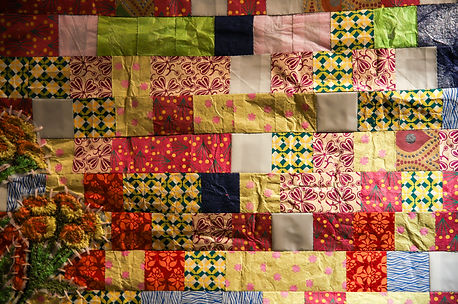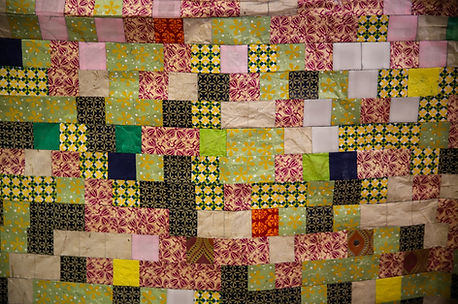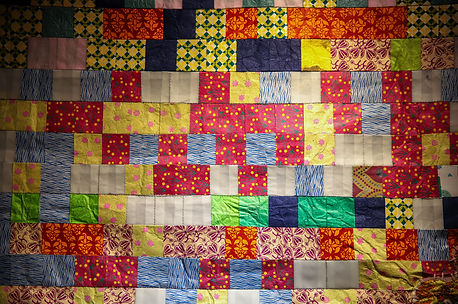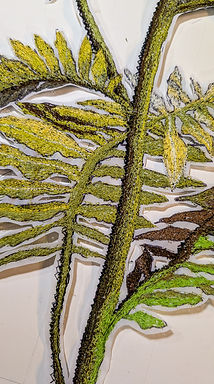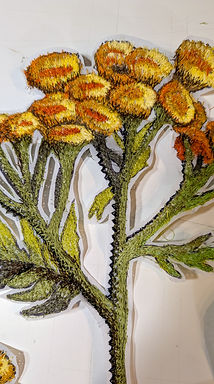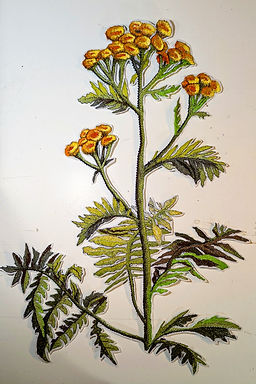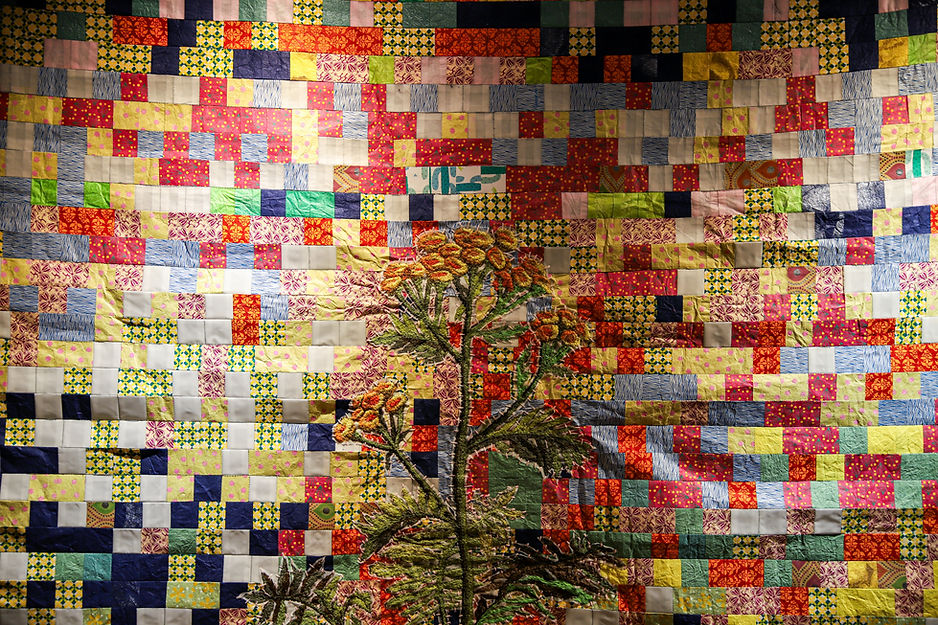Featuring
STEGANOGRAPHY
MAOA
Art wrapping paper, thread.
183 x 152 cm.
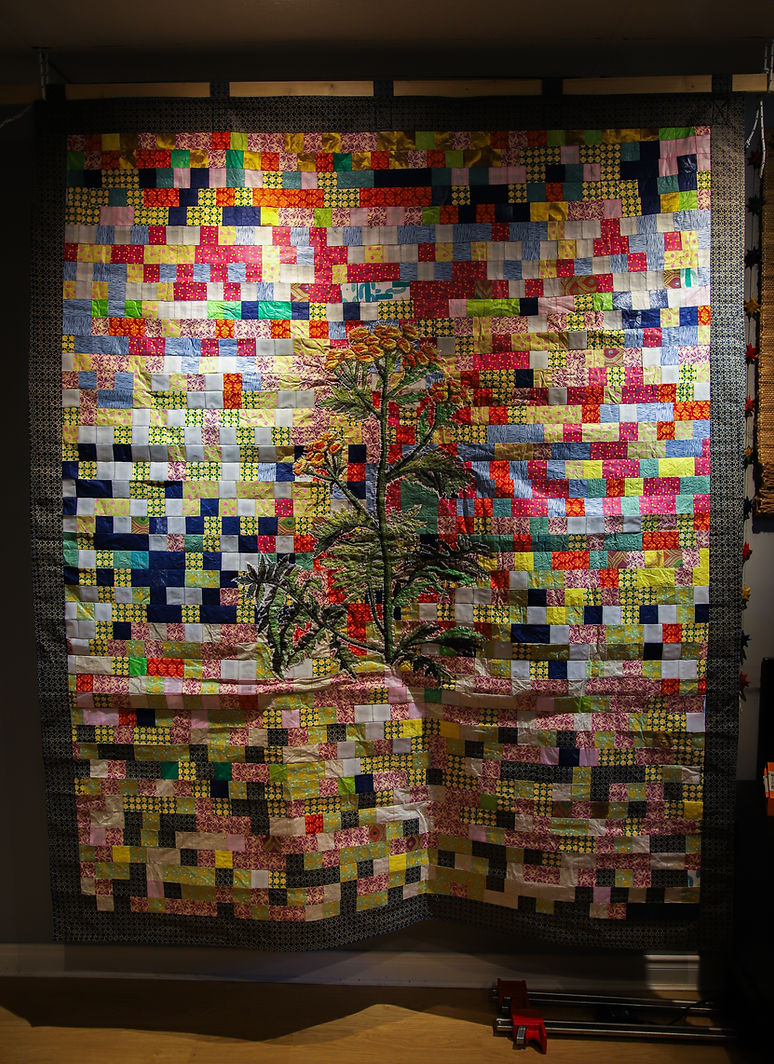
Artist Statement
Our behaviours are the result of genetic programming and the influence of the environment on that program. The human brain and the body chemistry dictate who we love, hate, care for, or reject from our lives. It is not surprising, then, to regularly read in the news scientific discoveries that emphasize generalized functions of genes and the programs they run in our lives.
While these generalizations leave aside the nuances about gene function and the critical influence of context on it, generalizations open the door to curiosity, exploration, and reflection on genetic and environmental influences. They remind us that nothing in life stands alone, but as part of a complex symphony that links creatures and processes at the planetary level, and suspect at some point, stellar, and interstellar levels.
Take, for example, the MAOA gene. MAOA (the genetic instructions to manufacture the enzyme MonoAmine Oxidase A) provides instructions that play a crucial role in regulating neurotransmitters like serotonin, epinephrine, norepinephrine, and dopamine. These neurotransmitters are involved in mood, emotion, stress response, and physical movement. Scientists have found that specific polymorphisms (little changes in the gene sequence) are linked to increased aggression, especially when combined with negative life experiences, giving the MAOA gene its nickname of the hate gene.
MAOA is a prime example of how genes and environment interact to create behaviour that we often attribute only to willpower. As every instruction coded in DNA, MAOA poses us with an interesting challenge: "How much of what I am is pre-recorded code, and how much is the result of personal decisions?" "Should reprochable behaviour be punishable if it is due to the genetic code?" "In what proportion is the environment responsible for my actions, and how can they influence the genetically caused behaviour?" "Are genes a new name for the old notion of destiny?" and if so, "What can/cannot we do to twist a predicted outcome?"
MAOA explore those questions, focusing particularly on how knowledge and reflection on the process could affect the outcome.
In this artwork, I codified the MAOA gene of ~1.6 K nucleotides (Accession: M89636.1) into paper squares. Then stitch those squares together to create 44 rows of ~36 paper nucleotides of 4 by 4 cm each. I use the principles of steganography, the practice of concealing the very existence of a hidden message within an ordinary-looking message or object, to hide the gene sequence into a cozy quilted paper blanket of 183 x 152 cm.
The metaphor behind seeks to expose the steganography of hate. The way society at large hides violence and hate while pushing individuals and groups into selective support and alliances. Using social media, television, and populism, we have concealed hate into our daily lives, covering us with it like a cozy quilted blanket created by your ancestors and then passed to us as a gift to treasure and nurture traditional ideas about otherness.
The quilted paper invites us to reflect on the fragility of hate and its components, once you identify their roots, like fragile squares of paper can be easily destroyed. The quilted paper also serves as a warning about the strengths of these individual, pervasive ideas, which gain strength from numbers and lack critical thinking. On top of the quilted blanket, there is an overimposed embroidery of a tansy (Tanacetum vulgare). Tansies have a history of medicinal/toxic uses by humans. During the Victorian age of flowerography, they became related with "hostile thoughts" being seen even as a declaration of war. But, just like everything in MAOA, they are also healing. Are genes that? Possibilities of what it could be?
One last playful, fortunate mistake aspect about my MAOA sequence itself. While I was stitching the papers together, I unknowingly "mutated" the sequence two or three times, which could affect the possible outcome of the gene. In biology, a mutation is an unexpected change in the genetic code. Nature creates mutations by altering the nucleotide sequence, removing, adding, or changing the order of a nucleotide, or thousands of them, which causes a shift in the reading frame. Those mutations are the key to change, the key to evolution.
#art #contemporaryart #paper #paperart #steganography #coding #sciart #artsci #hate

